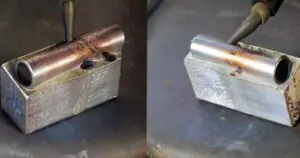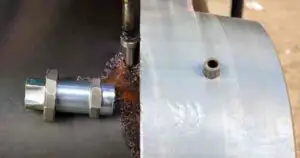Table of Contents
Weld joints are an integral part of various industries, from construction to manufacturing. Understanding their advantages and disadvantages is crucial for engineers, fabricators, and anyone interested in the world of welding. In this article, we’ll delve deep into the world of weld joints, examining their benefits and drawbacks. Whether you’re a novice or an expert, this guide aims to provide valuable insights into the topic.
What are the Advantages and Disadvantages of Weld Joints?
Weld joints, as the name suggests, are connections formed by welding two or more pieces of metal together. They offer a range of advantages and disadvantages, making them a subject of great interest. Let’s explore these in detail.
Advantages of Weld Joints
1. Strength and Durability
One of the primary advantages of weld joints is their exceptional strength and durability. When done correctly, welding creates a bond that can withstand substantial loads, making it ideal for critical structural applications.
2. Enhanced Aesthetics
Weld joints often provide a cleaner and more aesthetically pleasing appearance compared to other joining methods. This is especially important in industries where visual appeal matters, such as automotive and architecture.
3. Cost-Effective
Welding can be cost-effective for large-scale production. Once the initial setup costs are covered, the process itself is relatively economical, as it doesn’t require consumables like screws or rivets.
4. Versatility
Welding can be used to join a wide range of materials, including metals, plastics, and even composites. This flexibility makes it a useful method in different industries.
5. Increased Structural Integrity
Weld’s joints often contribute to increased structural integrity because they create a continuous connection, reducing the risk of parts coming apart under stress.
6. Minimal Material Waste
Unlike some other joining methods that generate waste material, welding produces minimal waste, making it environmentally friendly.
Disadvantages of Weld Joints
1. Skill-Dependent
Achieving high-quality welds requires a significant level of skill and expertise. Poorly executed welds can compromise the joint’s strength and durability.
2. Thermal Distortion
Welding generates heat, which can cause thermal distortion in the materials being joined. This distortion may affect the fit and alignment of components.
3. Weakened Corrosion Resistance
In certain cases, welding can weaken the corrosion resistance of materials, especially when dealing with stainless steel or aluminum.
4. Limited Joint Flexibility
Weld’s joints are less flexible than some other types of joints. This lack of flexibility can be a disadvantage in applications where movement or vibration is a concern.
5. Specialized Equipment Needed
Welding requires specialized equipment, which can be costly to purchase and maintain. This is a significant drawback for small-scale operations.
6. Safety Concerns
Welding poses safety hazards, including exposure to high temperatures, UV radiation, and potentially harmful fumes. Adequate safety measures and equipment are essential.
FAQs (Frequently Asked Questions)
Are weld joints suitable for all materials?
Weld joints can be used for various materials, but their suitability depends on the specific materials and application. Talk to a welding expert to figure out the right way to do it.
How can I ensure the strength of a weld joint?
To ensure the strength of a weld joint, it’s crucial to follow proper welding procedures, use the correct welding technique, and perform adequate quality control checks.
Can weld joints be undone or modified?
While it’s possible to cut and remove weld joints, doing so can be challenging and may compromise the integrity of the materials involved. Modification is generally limited.
What safety precautions should I take when welding?
When welding, always wear appropriate protective gear, work in a well-ventilated area, and follow safety guidelines outlined in welding manuals and regulations.
Are there alternatives to welding for joining materials?
Yes, there are alternative methods for joining materials, including bolting, riveting, and adhesive bonding. The choice depends on the specific requirements of the project.
Can welding be automated for mass production?
Yes, welding can be automated for mass production, increasing efficiency and consistency in large-scale manufacturing processes.
Conclusion
In conclusion, weld joints offer numerous advantages, including strength, durability, and cost-effectiveness. However, they also come with disadvantages such as skill-dependency and safety concerns. When considering the use of weld joints, it’s essential to weigh these pros and cons carefully and ensure that the welding process is executed with precision and expertise.
Welding remains a critical and widely used joining technique across various industries, but it should always be approached with a thorough understanding of its benefits and limitations.



2 thoughts on “The Advantages and Disadvantages of Weld Joints”